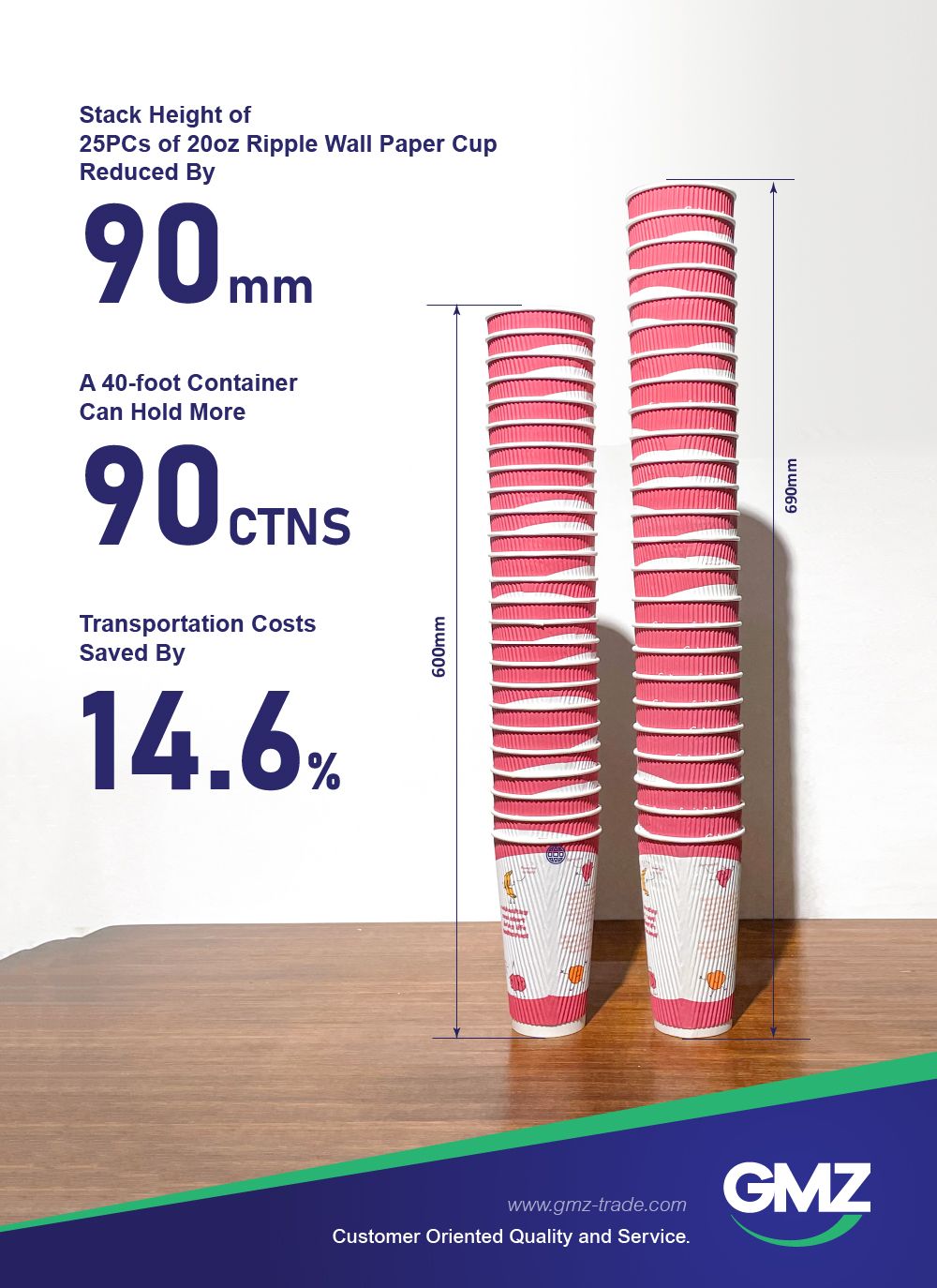
When it comes to convenience and sustainability, paper cups have become the go-to choice for beverages in many settings. However, one aspect that is often overlooked is the stack height of paper cups.
Stack height refers to the number of cups that can be vertically stacked on top of each other without compromising stability. In other words, it measures how many cups can be efficiently stored and transported in a compact manner. The stack height of paper cups is influenced by several factors, including cup design, raw materials , and manufacturing standards.
A higher stack height translates to more cups being stored in a smaller area, allowing for efficient use of space. This is particularly important in coffee shops, where storage space is often limited. With taller stack heights, businesses can reduce the frequency of restocking and make better use of their storage facilities.
In terms of transpotation, higher stack heights mean fewer trips for suppliers, reducing transportation costs and carbon emissions.If you can reduce the stack height of 25pcs of 20oz ripple wall paper cups by 90mm.Then a 40 footcontainer can hold more 90 cartons,which means a saveing of 14.6% on shipping cost .
Efficient manufacturing processes are crucial for meeting the demand for paper cups. By designing cups with an optimal stack height, manufacturers can streamline their production lines, ensuring faster and more cost-effective manufacturing,which can be pass on to businesses and comsumers .
By maximizing stack height businesses can reduce the number of deliveries and decrease the overall amount of packaging material used. This leads to a decrease in waste generation and a more sustainable supply chain.
Lastly, but importantly, stack height influences consumer convenience. Whether it's a busy coffee shop or an event with a long queue, having more cups readily available reduces waiting times and ensures a seamless experience. Additionally, customers who purchase cups for personal use can benefit from having more cups easily stackable in their cupboards at home.
By optimizing stack height, we can maximize storage efficiency, minimize transportation requirements, streamline manufacturing processes, and reduce the overall environmental impact to bring significant environmental and economic benefits.
